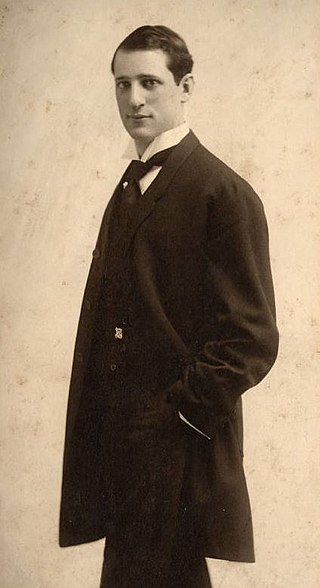
Albert Von Tilzer was an American songwriter, the younger brother of fellow songwriter Harry Von Tilzer. He wrote the music to many hit songs, including, most notably, "Take Me Out to the Ball Game".

Jean Schwartz was a Hungarian-born Jewish American composer and pianist. He is best known for his work writing the scores for more than 30 Broadway musicals, and for his creation of more than 1,000 popular songs with the lyricist William Jerome. Schwartz and Jerome also performed together on the vaudeville stage in the United States; sometimes in collaboration with Maude Nugent, Jerome's wife, and the Dolly Sisters. Schwartz was married to Jenny Dolly from 1913 to 1921.

Ray Henderson was an American songwriter.

The Ziegfeld Follies were a series of elaborate theatrical revue productions on Broadway in New York City from 1907 to 1931, with renewals in 1934, 1936, 1943, and 1957. They became a radio program in 1932 and 1936 as The Ziegfeld Follies of the Air.
Louis Achille Hirsch, also known as Louis A. Hirsch and Lou Hirsch, was an American composer of songs and musicals in the early 20th century.
Maceo Pinkard was an American composer, lyricist, and music publisher. Among his compositions is "Sweet Georgia Brown", a popular standard for decades after its composition and famous as the theme of the Harlem Globetrotters basketball team.
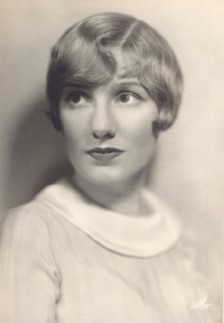
Marion Harris was an American popular singer who was most successful in the late 1910s and the 1920s. She was the first widely-known white singer to sing jazz and blues songs.

The Little Show was a musical revue with lyrics by Howard Dietz and music by Arthur Schwartz. It was the first of 11 musicals that featured the songs of Dietz and Schwartz. The revue opened at the Music Box Theatre on Broadway on April 30, 1929 and ran for 321 performances until February 1930.
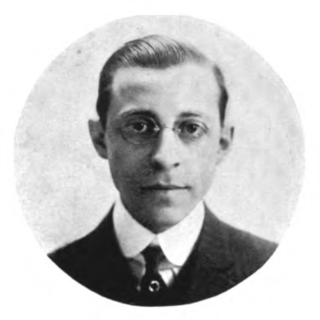
David Stamper was an American songwriter of the Tin Pan Alley and vaudeville eras, a contributor to twenty-one editions of the Ziegfeld Follies, writer for the Fox Film Corporation, and composer of more than one thousand songs, in spite of never learning to read or write traditional music notation. He may have written "Shine On Harvest Moon", a claim supported by vaudeville performer and writer Eddie Cantor. He was also a charter member of the American Society of Composers, Authors and Publishers or ASCAP.

The period from the end of the First World War until the start of the Depression in 1929 is known as the "Jazz Age". Jazz had become popular music in America, although older generations considered the music immoral and threatening to cultural values. Dances such as the Charleston and the Black Bottom were very popular during the period, and jazz bands typically consisted of seven to twelve musicians. Important orchestras in New York were led by Fletcher Henderson, Paul Whiteman and Duke Ellington. Many New Orleans jazzmen had moved to Chicago during the late 1910s in search of employment; among others, the New Orleans Rhythm Kings, King Oliver's Creole Jazz Band and Jelly Roll Morton recorded in the city. However, Chicago's importance as a center of jazz music started to diminish toward the end of the 1920s in favor of New York.
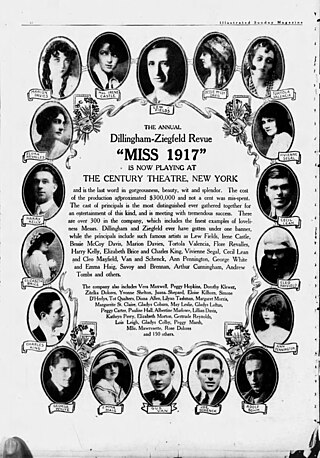
Miss 1917 is a musical revue with a book by Guy Bolton and P. G. Wodehouse, music by Jerome Kern, Victor Herbert and others, and lyrics by Harry B. Smith, Otto Harbach, Henry Blossom and others. Made up of a string of vignettes, the show features songs from such musicals as The Wizard of Oz, Three Twins, Babes in Toyland, Ziegfeld Follies and The Belle of New York.

The Village of St. Bernadette is the sixth studio album by American pop singer Andy Williams and was released in early 1960 by Cadence Records. It was described by Billboard magazine as "a lovely set of pop inspirational, hymns, and religious themes".

Ida Adams, sometimes credited as Ida M. Adams, was an American-born actress and singer who worked chiefly in musical theatre.

"Limehouse Blues" is a popular British song written by the London-based duo of Douglas Furber (lyrics) and Philip Braham (music).

Nora Bayes was an American singer and vaudeville performer who was popular internationally between the 1900s and 1920s. She is credited with co-writing the song "Shine On, Harvest Moon" and performed many successful songs during the First World War, including "Over There". She was also noted for her independent views and unconventional private life, becoming an early media celebrity. She made over 160 recordings.
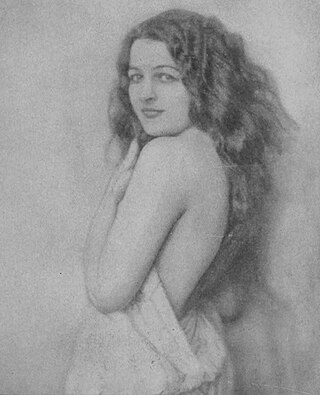
Janet Velie was an American actress who was primarily known for her performances in Broadway musicals. She first came to prominence portraying the title roles in the musicals La La Lucille (1919) and Mary (1920), and then had success in the Ed Wynn music revues The Perfect Fool (1921) and The Grab Bag (1924). In 1925 she created the role of confidence woman Penelope Martin in Irving Berlin's The Cocoanuts; a role she reprised in 1927. She was the sister of actor Jay Velie and sometimes performed in productions with him. In addition to her work in theatre, she also appeared in a few short films.

Albert Gumble was an American composer, pianist, music arranger, and songwriter. After graduating from the Auditorium School of Music in Cincinnati, he lived and worked briefly in Chicago during the early years of the twentieth century before moving to New York City where he worked as a Tin Pan Alley composer of ragtime pieces and songs. As a songwriter he was particularly associated with dixie tunes. He also was a prolific music arranger and contributed music to several Broadway musicals. From 1938 until his death in 1946 he was a resident pianist at the Ansonia Hotel.

Arthur M. Swanstrom was an American lyricist, playwright, producer, and dancer. The son of politician J. Edward Swanstrom, he began his career as a ballroom dancer; primarily performing in that capacity in nightclubs and in vaudeville. He expanded into working as a lyricist; initially working in partnership with John Murray Anderson as the lyricist for the revue The Greenwich Village Follies from 1919 to 1921. He became active as a Tin Pan Alley songwriter; writing lyrics for popular songs. Some of his hit songs included "Blues My Naughty Sweetie Gives to Me" (1919), "The Argentines, The Portuguese, and the Greeks" (1920), "Broadway Blues" (1920), "Rain" (1927), and "Twenty-Four Hours A Day" (1935). Many of his songs were written in collaboration with Carey Morgan; although he worked with several other composers during his career. He was both producer and lyricist for the Broadway productions of Sons O' Guns (1929) and Princess Charming (1930), and authored both the lyrics and book to the Broadway musical Sea Legs (1937). Ill health and financial problems plagued Swanstrom in the last years of his life, and he died of a stroke in 1940 at the age of 52.
















